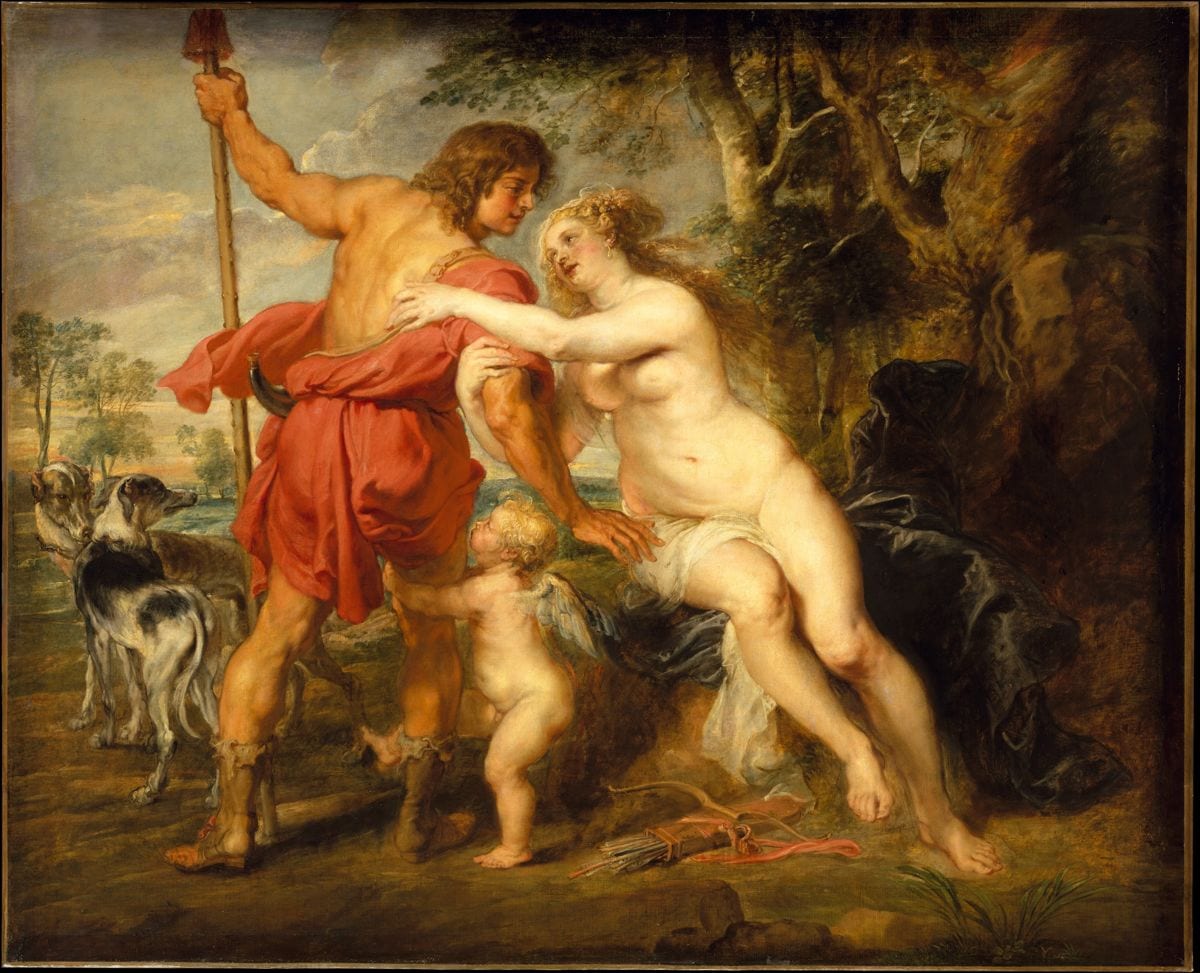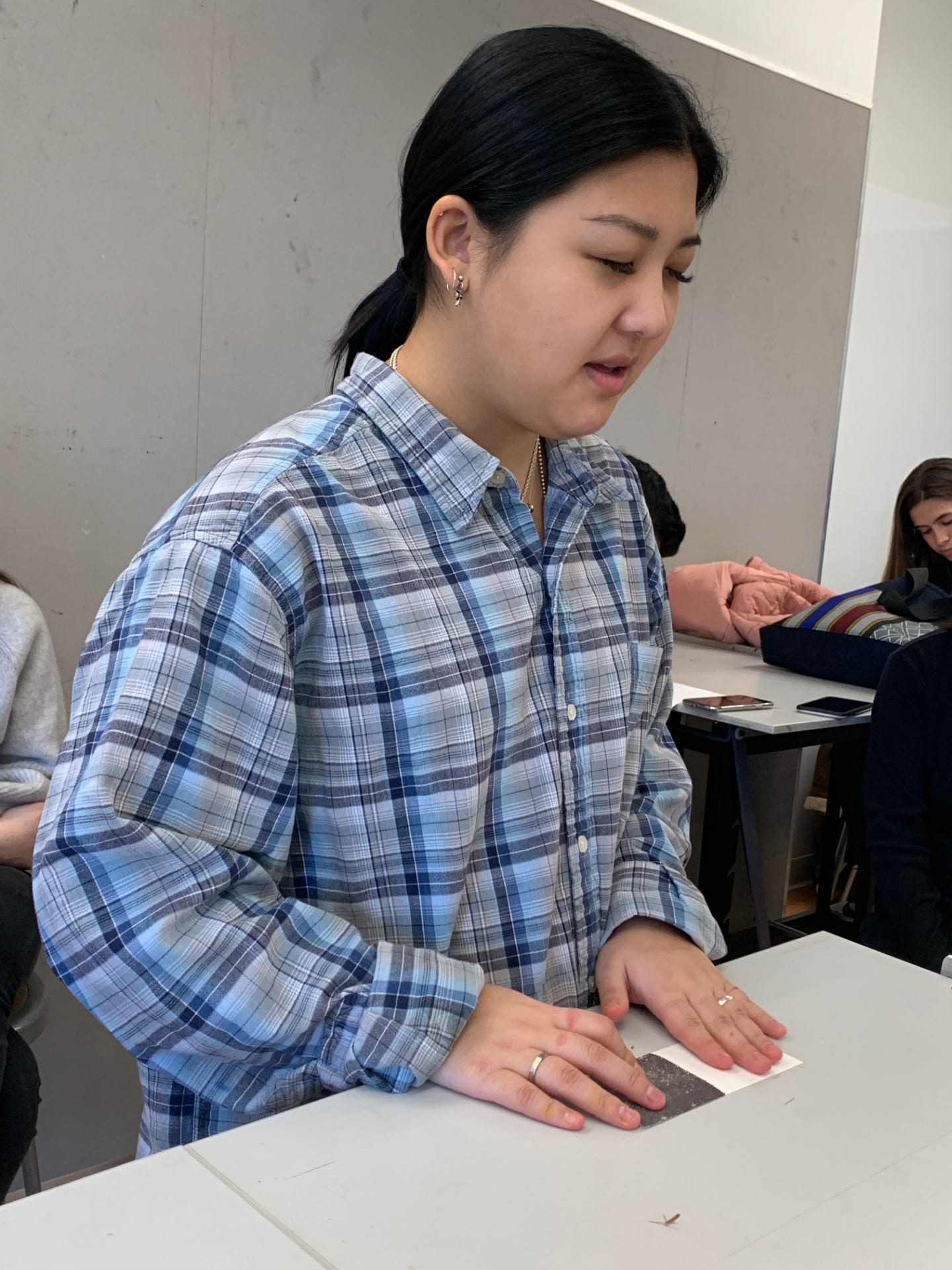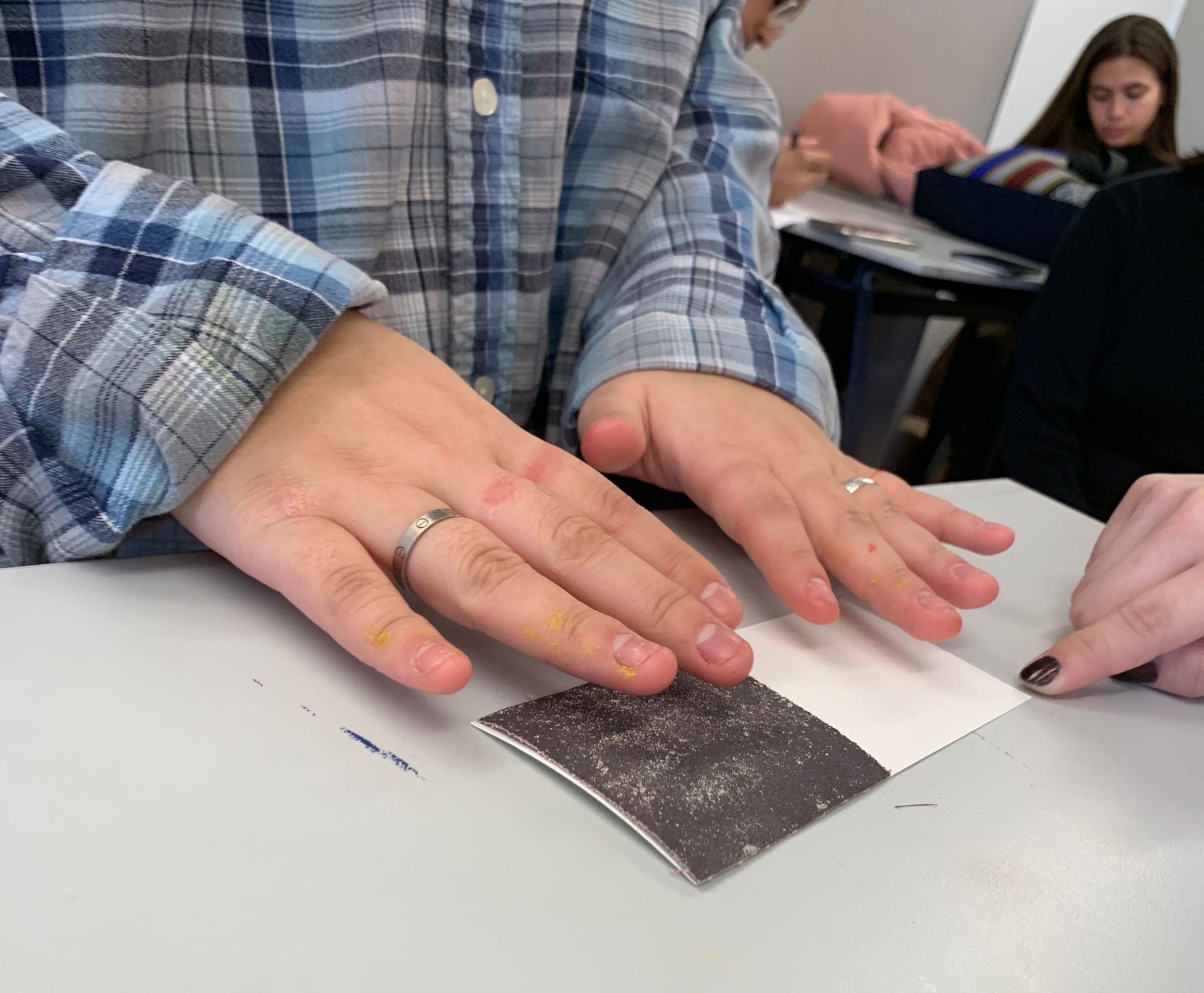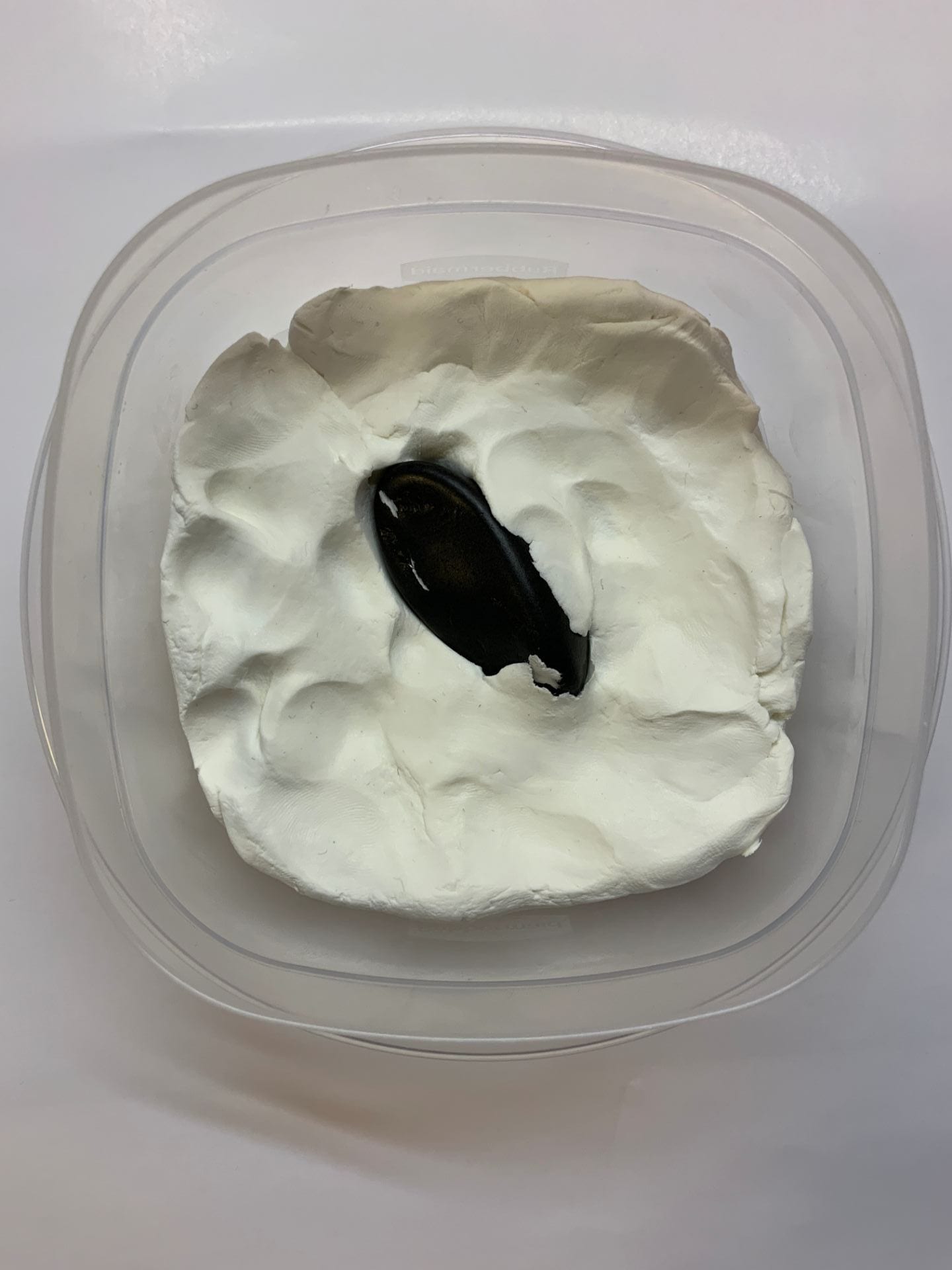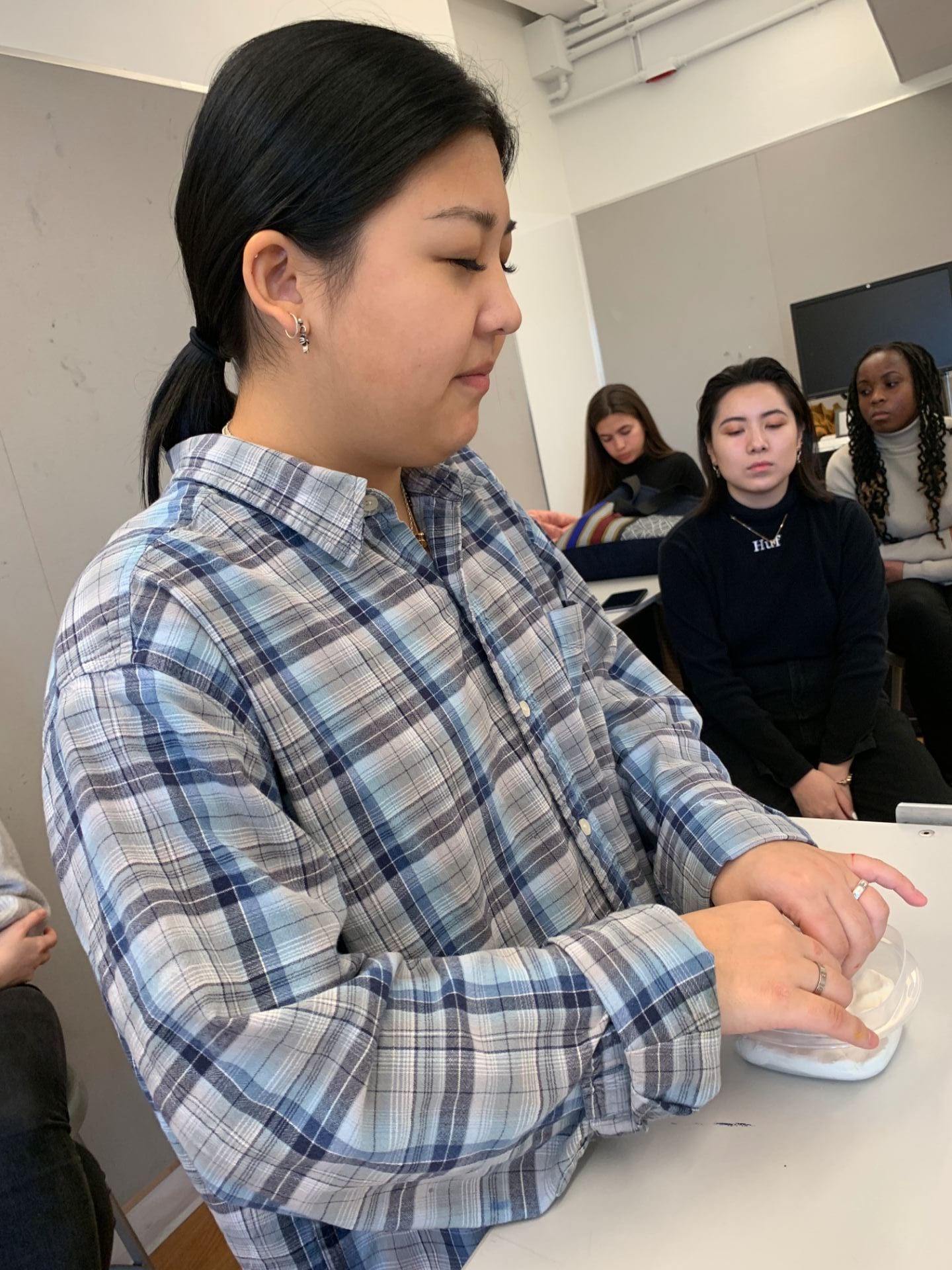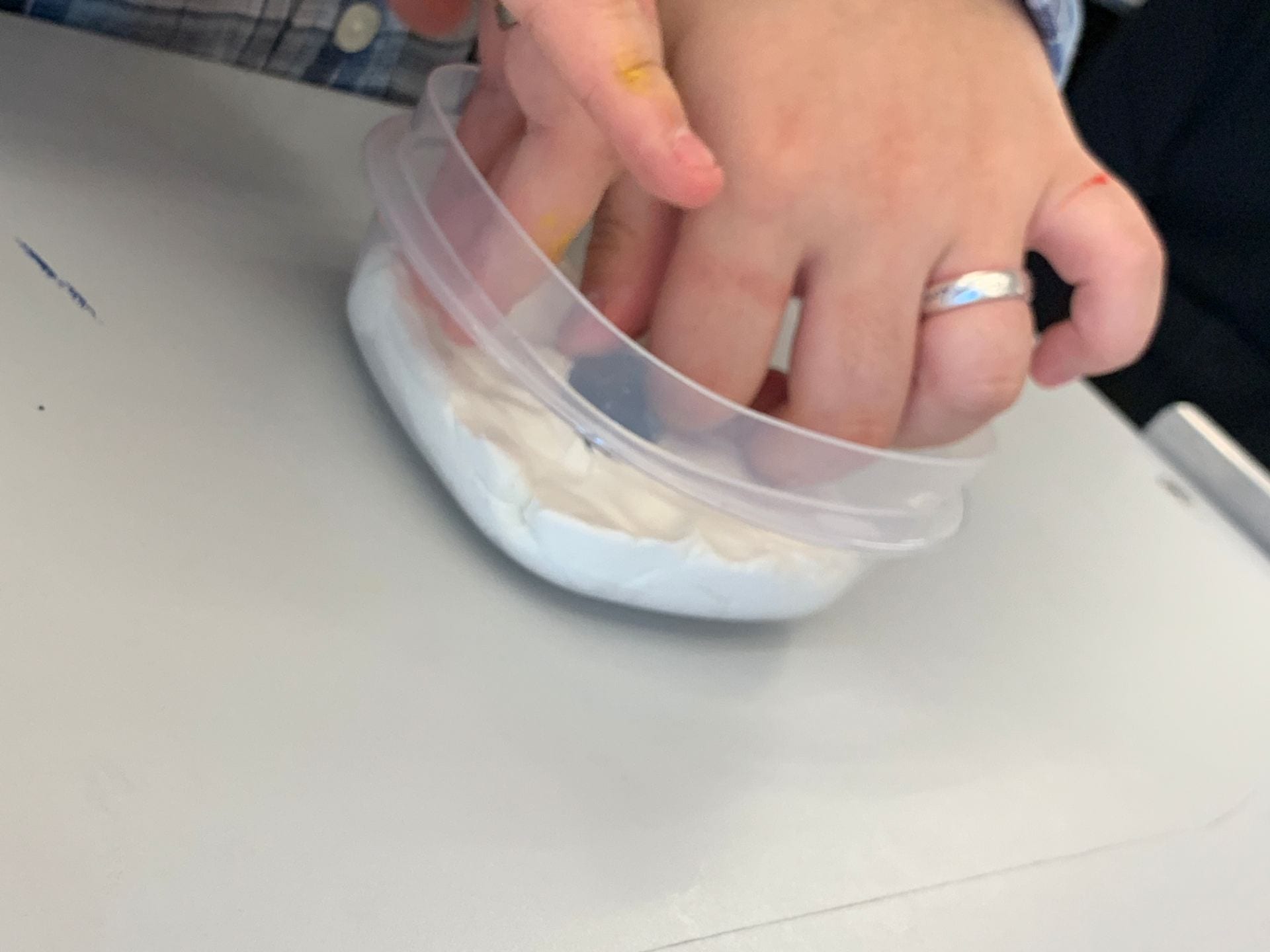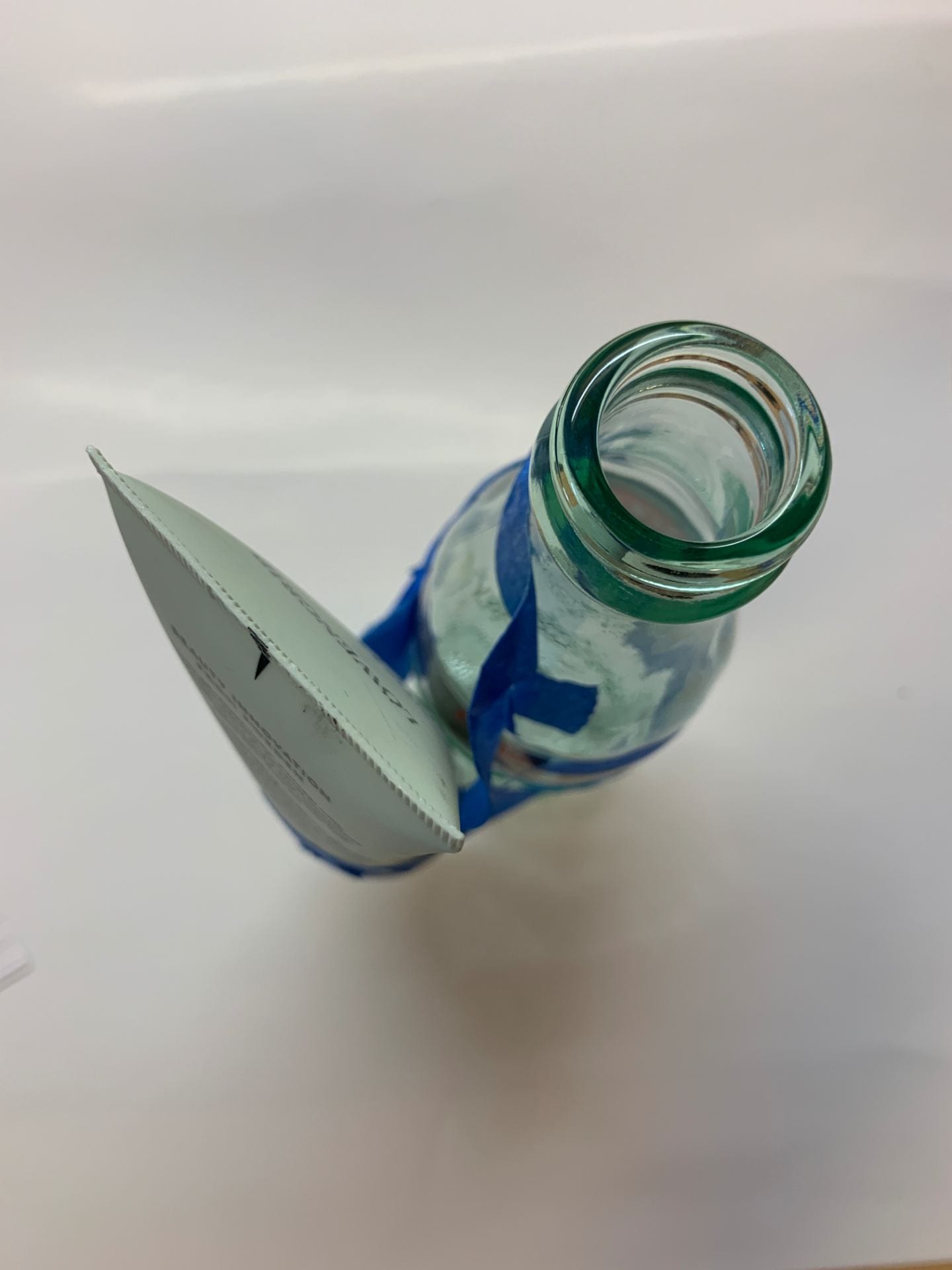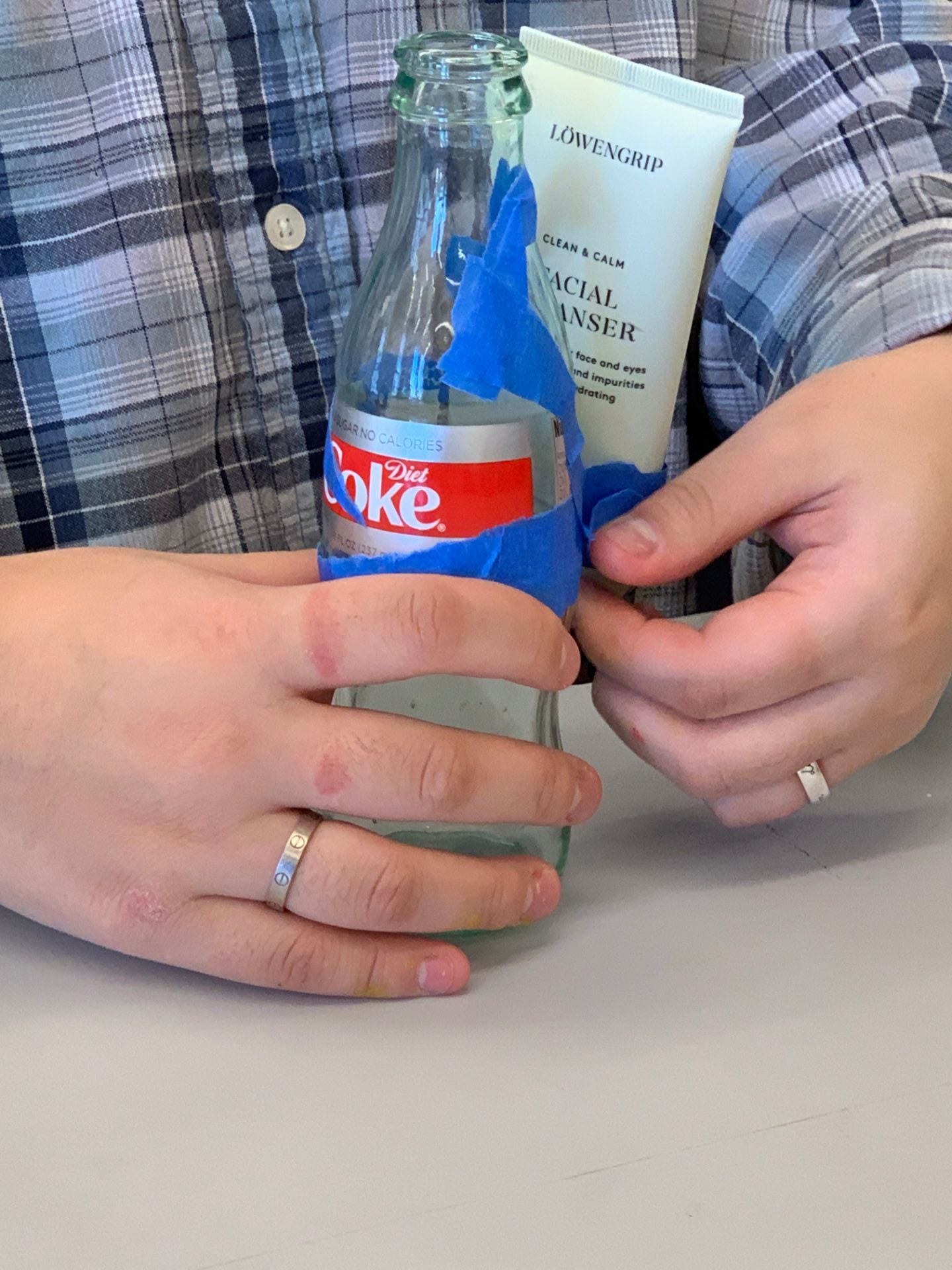For this bridge project, I was assigned to translate a two dimensional work of my choice into textures. I decided to use “Venus and Adonis” by Peter Paul Rubins, an oil on canvas painting done in the mid 1630’s. In small groups, we dissected the painting, writing down phrases that we described it with. After brainstorming ideas in class, I decided to focus on 3 key elements I found the most interesting from the painting. I wrote down the 3 phrases on notecards to present along with my translations and the original image.
My first translation was of the key phrase “Drastic shift in scenery”. I found the color difference and weight of the background was one of the most prominent features of the painting. From left to right, the scenery begins light and airy and ends with a dark and dense foliage. I noticed there was no gradual gradation, it was a rather sudden change in the middle of the painting. I chose to play with paper textures to mock the shift. I used two different papers, sand paper and Bristol board to compare the light and dark background. The Bristol board acts as the soft cloudy sky, while the sand paper is rough and heavier like the twisted trees and dark branches. Both are side by side in a long rectangular shape, meant to be felt from side to side. There are distinct halves because the split is right down the middle to show the lack of gradation. Pictured below is a peer experiencing the piece, and noting how one side felt smooth while the other was rough, along with the weight differences.
The second translation I created was of the phrase “organic, clinging, firm”. I was immediately drawn to the anatomy and implied movement of Venus and Adonis in the center. Venus is painted so pale and her hair flows, while she clings to Adonis, who is facing away from her. Venus’s body takes such an organic form. Adonis is muscular and firm, painted in a defensive type stance. I used a soft white paper clay to represent Venus’s soft shaped, clinging body, while Adonis is like the rock, firm and strong. When touching the clay, it sticks to your fingers and the rock in the middle, but also feels powdery and organic. The rock is in the center because the myth that goes along with the painting is about how Venus loved Adonis even though he just wanted to hunt. He was like the “center of her world”.
I based the third translation on the phrase “Unnatural connection”. I thought about the myth, more specifically Venus’s unrequited love with Adonis. As previously mentioned, Venus fell in love with Adonis although he didn’t love her back, he just wanted to hunt. Cupid is also pictured in the painting, his arrows astray on the ground, as he clings to Adonis’s leg. I found this the most interesting feature of the painting. I decided to use two bottles to represent Venus and Adonis, both having a life with purpose on their own. The coke bottle is firm and smooth like Adonis, while the face cleanser bottle is soft and can easily be dented like Venus’s organic form. I bound them together with tape, in a messy, uneven way to show the unnatural connection between the bottles. It also can represent the arrows that Cupid uses to make people fall in love, forming an unnatural bond between the people he aims at. The two bottles are both the same type of object, although they hold very different products, paralleling how Adonis and Venus are both gods, but are gods of different natures. I wanted the person experiencing the piece to take into account the different in the bottles, and the feeling of how rigid the tape was placed.
